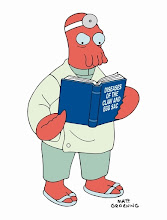
The overhead position is seen in numerous sports, such as weightlifting, swimming, tennis and gymnastics, to name but a few. In simple terms it involves maximal flexion of the shoulder, varying degrees of scapula elevation and upward rotation, and, depending on the sport, varying degrees of humeral rotation.

 Common to these sports, as well as any others that make extensive use of the overhead position, are shoulder injuries. The reason for this will be explored in more detail in a later post. What I want to discuss first is how a proper overhead position is achieved.
Common to these sports, as well as any others that make extensive use of the overhead position, are shoulder injuries. The reason for this will be explored in more detail in a later post. What I want to discuss first is how a proper overhead position is achieved.Firstly, the humerus must be maximally flexed. The muscles primarily responsible for this are the anterior and lateral fibres of the deltoid. The anatomy of the scapula means that the humerus alone can only flex to just pass parallel with the ground. To raise the hand further requires the scapula itself to move, to allow the humerus to effectively flex further.
 The image above shows the left scapula. The head of the humerus sits on the glenoid fossa, with the coracoid process anteriorly and medial to it and the acromion process rising above it, to meet the end of the clavicle (collarbone).
The image above shows the left scapula. The head of the humerus sits on the glenoid fossa, with the coracoid process anteriorly and medial to it and the acromion process rising above it, to meet the end of the clavicle (collarbone). We can see, looking from the front and from the side, that the coracoid process does not obstruct humeral flexion. The acromion, however, will eventually get in the way and unless the whole complex of scapula and humerus moves, no further raising of the arm overhead will be possible. This process is known as Subacromial Impingement, which may lead to impingement syndrome, a common complaint in overhead athletes. The movement of the scapula required is upward rotation and posterior tilting.
We can see, looking from the front and from the side, that the coracoid process does not obstruct humeral flexion. The acromion, however, will eventually get in the way and unless the whole complex of scapula and humerus moves, no further raising of the arm overhead will be possible. This process is known as Subacromial Impingement, which may lead to impingement syndrome, a common complaint in overhead athletes. The movement of the scapula required is upward rotation and posterior tilting. This effectively moves the acromion out of the way, so the humerus can achieve proper overhead position. The muscles chiefly responsible for these movements of the scapula are the lower and upper fibres of the Trapezius (lower fibres in red) and the Serratus Anterior.
This effectively moves the acromion out of the way, so the humerus can achieve proper overhead position. The muscles chiefly responsible for these movements of the scapula are the lower and upper fibres of the Trapezius (lower fibres in red) and the Serratus Anterior.
 Together, these muscles rotate the scapula to point the glenoid towards the sky, clearing the acromion process from above the humerus and allowing the overhead position to be reached. The following video demonstrates the movement of the overhead press, which exemplifies to movements of humerus and scapula necessary to achieve the overhead position. Notice the rotation of the scapula and contractions of trapezius (from the back) and serratus (from the side) that occur. Failure of these muscles to contract in an organised fashion will result in faulty elevation of the arm and often contribute to subacromial impingement.
Together, these muscles rotate the scapula to point the glenoid towards the sky, clearing the acromion process from above the humerus and allowing the overhead position to be reached. The following video demonstrates the movement of the overhead press, which exemplifies to movements of humerus and scapula necessary to achieve the overhead position. Notice the rotation of the scapula and contractions of trapezius (from the back) and serratus (from the side) that occur. Failure of these muscles to contract in an organised fashion will result in faulty elevation of the arm and often contribute to subacromial impingement.A common finding is that these muscles are shut down as a result of poor posture, poor training habits and inflexibilities and/or overdominance of muscles elsewhere. For example, the lower fibres of the trapezius are typically weak and inhibited. As we know, the upper fibres on their own can achieve scapular elevation, whereas the lower fibres on their own will depress and retract the scapulae. It is only together that they achieve upward rotation.
The upper traps are typically active at a low level almost all of the time; whenever we sit badly with our shoulders shrugged, or when we are carrying heavy shopping. Over time they become more dominant, and the lower traps become inhibited to prevent stretching of the tight, short upper traps. Now the lower traps don't contract as they should and upward rotation of the scapulae is compromised. The upper traps contract as normal, but without the firing of the lower traps, the scapulae just elevate rather than rotate upwards. This fails to clear the acromion process from the path of the humerus, and the head of the humerus thus impinges under the acromion.















